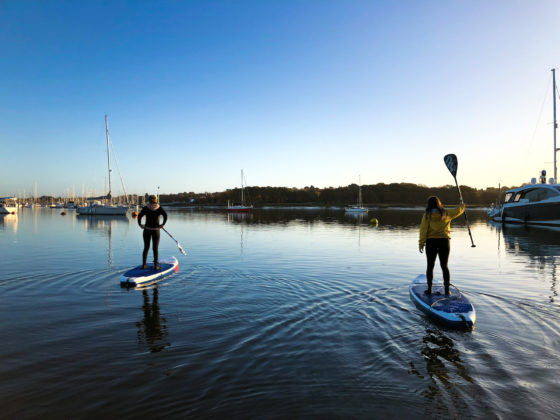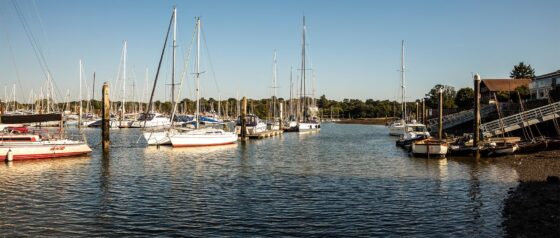
River Hamble chairman: ‘No community has a greater right to use the water than any other’

After a busy summer on the Hamble, MIN caught up with Hampshire county councillor and chairman of the River Hamble Harbour Board, councillor Seán Woodward, to understand the pressures that come with managing the competing interests of water users.
In August 2022, managers of the Hamble admitted there is often a ‘lack of awareness’ among users on the River Hamble and nearby coastline, especially as demand for spending time on the water continued to increase throughout the summer.
As anyone who has used the river will know, the Hamble is one of the busiest and most popular recreational waterways in the UK, with around 3,200 boats afloat.
This summer, the use has expanded with the boom in stand-up paddleboarding adding to the mix.

Pictured left: Councillor Seán Woodward, chairman of the River Hamble Harbour Board
“Like other locations, we have also seen a significant increase in kayaking and paddleboarding activity this summer. The River Hamble is very popular with all kinds of craft, and our aim is to encourage as many people as we can to enjoy it safely,” says Cllr Woodward.
Local Facebook groups were resplendent with comments about the awareness some of the newcomers have of river protocol – or lack of it. And that wasn’t limited to paddleboarders. The dramatic rise in open water swimmers also caused ire for some.
“Whilst we do not encourage swimming in the river – boats, swimmers, strong tides and cold water do not mix well – we do recognise that it has always taken place,” says Woodward.
“It is our role at the River Hamble Authority to encourage and help each element of the community to understand the different safety challenges in navigating the various sections of the river. Patience, good planning and good manners are central to enjoying time on the water, particularly during busy times.”

Paddleboarding is increasingly popular on the River Hamble. Image courtesy of MDL Marinas
One of the encouragements out in place was to rethink signage. Woodward cites the main channel at Swanwick as a particular challenge for both paddleboarders and motor vessels. The slipway there is a popular launching site for small craft, but also close to where large craft manoeuvre into and out of a marina.
“Here, the perspective and knowledge levels of both craft will be different,” he says. “First, we have to find the best way of engaging with the paddleboard community and marina traffic. Motor vessel skippers will usually understand the collision regulations better, but we ask them to take into account likely periods of heavy small-craft traffic, when planning navigation there.”
According to Woodward, discussions with small craft users and hiring companies led to the positioning of straightforward signage, using road terminology — stop, give way, etc — to guide small craft users inshore of the main channel. And at busy periods, the team positioned a boat there to help manage traffic.
“These steps bore fruit,” Woodward says.
Part of his role is to ask all those who use the river to think ahead and be considerate, but the majority of concerns expressed to the harbour master and his team are about excessive speed and wash.

River Hamble has a speed limit of six knots. Image courtesy of Visit Hampshire
“A safe speed is one where you can stop quickly enough to avoid collision, and we operate a speed limit of six knots,” he says. “It is also important that those driving craft appreciate the effect their wash has on the smaller and less stable craft they pass, or on people working aloft or on the heavily environmentally protected banks of the river. A look astern to check wash before passing a small boat or vessel with someone aloft will always be seamanlike.
“The challenges of managing a confined waterspace such as ours then come down to four factors: engagement, education, patrol presence on the water and ultimately enforcement if required. This applies evenly and relies basically on common sense, underpinned by our by-laws. No one community has a greater right to use the water than any other.”
Woodward says that the work of the River Hamble Authority is transparent, and all its decisions are made in public meetings. This, he hopes, gives people the confidence that everyone’s interests are considered and valued, because, as he rightly says: “The River Hamble belongs to all who use it, and this guides our approach to its management.”
